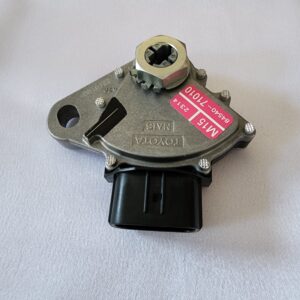Title: Unveiling the Secrets of Air-Fuel Ratio Sensors in Your Car!
Today, we’re diving into the world of air-fuel ratio sensors in your car. You might not give them much thought, but these little devices play a crucial role in keeping your engine running smoothly and efficiently. So, let’s uncover the mysteries behind air-fuel ratio sensors!
First things first, what exactly is an air-fuel ratio sensor? Well, simply put, it’s a sensor that measures the ratio of air to fuel in the engine’s combustion chamber. This information is then sent to the engine control unit (ECU), which uses it to adjust the amount of fuel being injected into the engine for optimal performance.
One of the key differences between an air-fuel ratio sensor and an oxygen sensor is that the air-fuel ratio sensor can detect not only whether the mixture is rich or lean, but also how rich or lean it is. This allows for more precise control over the fuel injection process, leading to better fuel efficiency and lower emissions.
So, why is this important for your car? Well, having the right air-fuel mixture is crucial for your engine to operate efficiently. If the mixture is too rich, you’ll be burning more fuel than necessary, leading to decreased fuel economy and increased emissions. On the other hand, if the mixture is too lean, your engine may not be able to generate enough power, leading to poor performance and potential damage to the engine.
Now, you might be wondering how you can tell if your air-fuel ratio sensor is failing. Some common signs include a decrease in fuel efficiency, rough idling, engine misfires, and an illuminated check engine light. If you notice any of these symptoms, it’s important to have your sensor checked by a professional mechanic to avoid any further damage to your vehicle.
In conclusion, air-fuel ratio sensors may be small, but they play a big role in keeping your car running smoothly and efficiently. By ensuring that your sensor is in good working condition, you can enjoy better fuel economy, improved performance, and reduced emissions. So, next time you hit the road, remember to give a little thanks to your trusty air-fuel ratio sensor!
If you found this information helpful, don’t forget to like, subscribe, and hit that notification bell on all Sensors and more social media platform for more automotive insights. Until next time, drive safe and stay curious!
In stock (can be backordered)
$29,137.67
Title: Unveiling the Secrets of Air-Fuel Ratio Sensors in Your Car!
Today, we’re diving into the world of air-fuel ratio sensors in your car. You might not give them much thought, but these little devices play a crucial role in keeping your engine running smoothly and efficiently. So, let’s uncover the mysteries behind air-fuel ratio sensors!
First things first, what exactly is an air-fuel ratio sensor? Well, simply put, it’s a sensor that measures the ratio of air to fuel in the engine’s combustion chamber. This information is then sent to the engine control unit (ECU), which uses it to adjust the amount of fuel being injected into the engine for optimal performance.
One of the key differences between an air-fuel ratio sensor and an oxygen sensor is that the air-fuel ratio sensor can detect not only whether the mixture is rich or lean, but also how rich or lean it is. This allows for more precise control over the fuel injection process, leading to better fuel efficiency and lower emissions.
So, why is this important for your car? Well, having the right air-fuel mixture is crucial for your engine to operate efficiently. If the mixture is too rich, you’ll be burning more fuel than necessary, leading to decreased fuel economy and increased emissions. On the other hand, if the mixture is too lean, your engine may not be able to generate enough power, leading to poor performance and potential damage to the engine.
Now, you might be wondering how you can tell if your air-fuel ratio sensor is failing. Some common signs include a decrease in fuel efficiency, rough idling, engine misfires, and an illuminated check engine light. If you notice any of these symptoms, it’s important to have your sensor checked by a professional mechanic to avoid any further damage to your vehicle.
In conclusion, air-fuel ratio sensors may be small, but they play a big role in keeping your car running smoothly and efficiently. By ensuring that your sensor is in good working condition, you can enjoy better fuel economy, improved performance, and reduced emissions. So, next time you hit the road, remember to give a little thanks to your trusty air-fuel ratio sensor!
If you found this information helpful, don’t forget to like, subscribe, and hit that notification bell on all Sensors and more social media platform for more automotive insights. Until next time, drive safe and stay curious!
| Warehouse | Inventory at warehouse 2 |
|---|

Get E-mail updates about our latest products and special offers.
Sensors and More is Jamaica’s ultimate online auto parts store. Established in 2020, we specialize in genuine electrical parts for Japanese, Read more…
Reviews
There are no reviews yet.